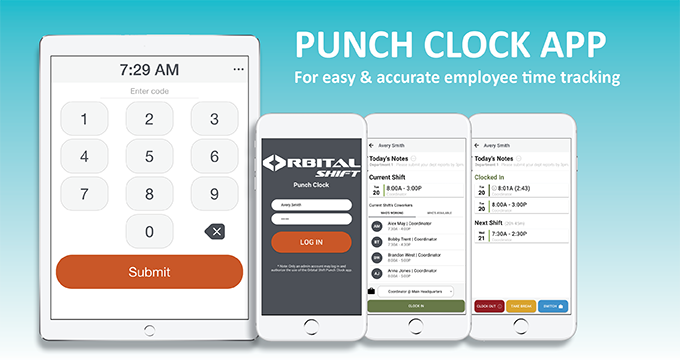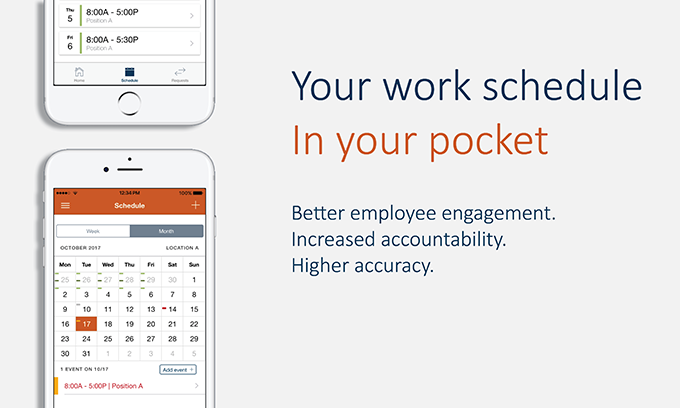Today, tech tools are essential for competing in the 21st century! But sometimes the cost of new hardware systems put those tools beyond the reach of a small business - making investing in technology challenging.
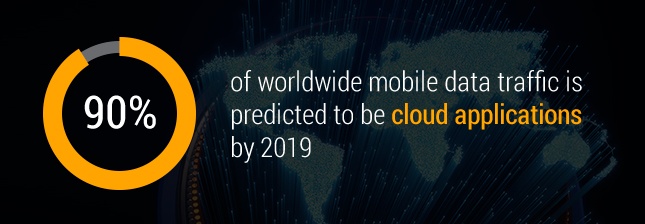
Luckily, software as a service - commonly shortened to SaaS - is an innovative cloud service management approach that greatly reduces the initial cost of utilizing such tools. Instead of investing in hardware solutions, applications are web-based, meaning any existing technology with a web browser - whether it-s a computer, tablet or phone - can be utilized to use the service.
It's no wonder that SaaS is catching on. According to Forbes, the SaaS market is predicted to grow from $49 billion in 2015 to $67 billion in 2018. Additionally, cloud applications are predicted to account for 90% of worldwide mobile data traffic by 2019.
But just as there's excitement surrounding the possibilities and favorable return on investment in regards to SaaS, there are also concerns. Because SaaS is cloud-based - meaning the computing power behind the service comes from large servers and is therefore out of the individual business owner's control - many small businesses worry that valuable data could fall into the wrong hands. High-profile cloud hacking headlines have only added to this concern.
So, if you're a small business owner, why should you turn to an SaaS application for managing your employee schedules, clock-ins and time off requests? Is security really that big of an issue? Do SaaS applications work as well as their hardware equivalents? These are all questions that deserve answers.
Luckily for you, we have them. Here at Orbital Shift, we take SaaS seriously, so we have a thing or two to say about utilizing cloud computing software for small businesses. That's why we're here to give you the definitive answer on why you should feel confident in small business SaaS utilization, especially when considering an employee time clock and schedule management solution.
Affordable
The first thing any business owner will notice about any SaaS business solution is the affordability. Because there are no hardware requirements, preexisting hardware assets can easily be put to work in the service of multiple SaaS solutions.
Consider employee time tracking and scheduling. Hardware time clocks are expensive and require dedicated installation and maintenance.
However, if you opt instead for an SaaS solution, employee phones or preexisting onsite computers become the time clock. Nothing needs to be installed and, if one computer malfunctions, another can easily take its place.
Additionally, the savings extend beyond non-existent installation costs. Because SaaS solutions are subscription-based, they're also very flexible. If your needs change, whether due to expansion or contraction, you can easily tailor your subscription to make sure you aren't paying for services you don't need, and that you're getting all of the service that you do!
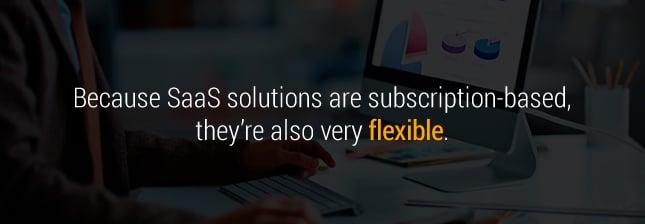
Finally, you will not need to pay for routine maintenance. Since SaaS solutions are all deployed from a central server, service providers are constantly maintaining, debugging and repairing the solution as needed. There's no need for a maintenance professional to be present onsite at your business in order to make sure you're up and running. Moreover, because customer support is centralized, if there is a malfunction, you'll get a quick response, since you won't have to wait for support to come to you.
In the end, all of these factors work together to keep SaaS solutions affordable and scalable, which is essential for the small business with tight profit margins and little room for error. You won't run the risk of investing in a hardware solution that ultimately goes underutilized. Subscriptions can be renewed, updated or canceled as needed, making them a much better fit for small businesses keeping a close eye on their budgets.
Integrated
However, while SaaS solutions are affordable, they're also more robust than many traditional hardware solutions. Specifically, SaaS solutions can be integrated in ways that make managing employees easier.
Take Orbital Shift's time clock software. Because the software is easily integrated with employee scheduling, time off requests, absence reporting, shift conflict reporting, labor reporting and even non-human resource scheduling, this SaaS solution does so much more than a traditional time clock.
As a manager, you'll no longer have to coordinate separate processes. You can get rid of the scribbled post-its listing employee vacation dates, multi-colored highlighters used to organize different employee positions and the lists tracking individual employee absence events. Not only does an SaaS time clock make payroll time tracking easier, but it also makes the entire human resources process much simpler.
Furthermore, with so much labor law oversight, an integrated solution makes reporting to the relevant parties easier, too. Not only does this take pressure off of management, but it actually makes it easier for you to make sure you're in compliance with applicable labor laws.
So, while SaaS is the smart choice for small business from a budget perspective, it's also the best solution from an HR perspective, as well. More affordable and more powerful is a winning combination!
Fast Onboarding
Small businesses also don't have a lot of down time. With such small staffs, there isn't a lot of opportunity to stagger training on a new solution. When it comes to onboarding a new solution, small businesses have to take an all-or-nothing approach.
While SaaS solutions certainly come with their own learning curve, they are significantly simpler than their hardware-based equivalents. In order to get started with SaaS, all you need is a web browser and a device that runs it!
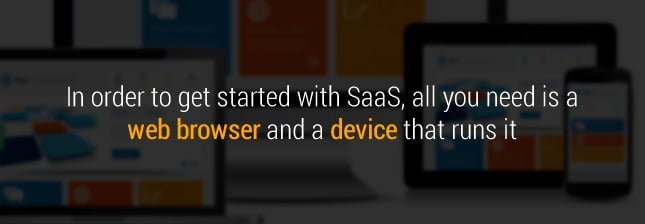
It's true that it may take time for management to familiarize themselves with all that an SaaS solution can do, but their basic functionality can be employed from day one. That means learning can happen even while the solution is providing its core services.
This is an incredible asset for small businesses. A day of training or installation is a day without making money. With the tight budgets of so many small businesses, a day off is either impossible or an incredible burden. By turning to an SaaS, small businesses can skip this costly step.
Seamless Upgrades
We all know technology changes. As soon as a solution is released, its creators are hard at work trying to improve it.
With a hardware solution, updating is costly. Hardware has to be replaced or retrofitted. Plus, unless the upgrade is designed to replace something that's defective, the cost of upgrading usually falls on the shoulders of the user and not the designer.
However, with SaaS, as solutions evolve, they are seamlessly upgraded. There's no gap in service and there's no cost for the user. Instead, the software is simply updated.
This is especially important when updates are small in scope but significant in functionality. An essential upgrade may not change any portion of the interface, meaning users might not even notice the change, but backend upgrades may make huge changes to how the software runs. When equivalent upgrades need to be made on hardware solutions, the process can be supremely frustrating. Sure, the solution may work better, but if management and employees can't sense the change, the downtime and the cost - both in the price of the upgrade and the loss in revenue - can seem needless.
Finally, small upgrades often don't require any change in approach from users. So why disrupt a small business's internal processes when a small patch is all that's needed to make the upgrade? Instead, an SaaS outsources your solution maintenance so you can forget about it.
Long-Term Service Relationships
Because SaaS solutions are subscription-based, you get an invested partner along with your solution.
With any SaaS solution, the provider of the solution is committed to making sure their product is working exactly to specifications at all times. They haven't provided you with a piece of equipment that you've purchased, meaning they haven't collected their payment upfront. Instead, SaaS solution providers are invested in keeping you as a subscriber.
From a purely economic standpoint, this means both subscriber and provider are partners - not just dealer and customer. If an SaaS solution stops working properly, the provider could potentially lose customers. They can't shrug small issues off. They will be much more dedicated to ensuring continued functionality than a traditional hardware solution dealer.
In fact, because of the way subscription services are structured, and the high cost of product development and server maintenance, most SaaS providers don't even turn a profit on a new subscriber until they've been using a solution for a year or more. Providers like Orbital Shift are committed to their business partners for the long haul and benefit little from a quick sale that ultimately leads to a dissatisfied customer.
This is especially beneficial for the small business owner who, because of the size of their operation, may come to feel that traditional equipment dealers don't give them the attention they deserve when something does go wrong. Large or small, SaaS providers are equally committed to their business partners.
Secure
The biggest concern for any SaaS subscriber is security. With many high-profile cloud security breaches making the news lately, it would seem that security is a sacrifice subscribers make when opting out of local, hardware-based solutions.
However, don't be deceived by high-profile cases. In many ways, SaaS solutions are more secure than their local counterparts.
While it's true that cloud-based applications are bigger targets for malicious hackers, they're also far better protected. Any company providing an SaaS solution is highly invested in providing the most robust and multilayered security possible.
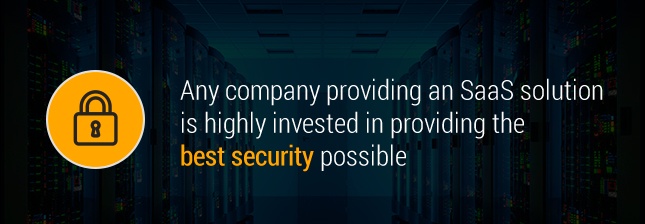
Think about the difference between a castle and a single family home. While it's true that a castle contains far more treasure than a single family home, a castle is also far more secure. A castle has a moat, a draw bridge, high walls and hundreds of knights and archers prepared to meet any threat face-to-face. A single family may have a lock on the door and even a guard dog, but the smaller payoff from robbing a home is still more worthwhile, considering how much easier it is to break in.
The same is true of large cloud solutions versus the localized equivalent. Local networks often have outdated security and don't get the kind of attention that a large SaaS application does.
Again, this is especially true for small businesses. While large companies can invest in IT security, small businesses are usually dependent upon a consumer-level anti-virus security software and not much else. By subscribing to an SaaS solution, you are also subscribing to that solution's robust security system.
Orbital Shift as the Ultimate SaaS Time Clock Solution
While many of the SaaS features previously discussed apply to a wide range of business solutions, when it comes to your time clock and employee scheduling management, Orbital Shift has not only set the standard - we're working constantly to raise it.
Not only are we dedicated to providing a robust and vast, yet easily used solution, but we are committed to giving you the continued technical support needed to use Orbital Shift to its fullest potential. Informative and instructional videos and tutorials are expertly designed to make onboarding a snap. We back that up with both email and phone support, giving you the extra help you need to get your system working smoothly.
Countless businesses, both large and small, can testify to the management time saved over traditional time clock and employee scheduling systems. Staff schedules can be completed in minutes, since both time off requests and human resource requirements are always at your fingertips. Furthermore, past labor resource data is easily accessed, allowing you to optimize your scheduling and human resources moving forward. And when you do have a consistently tardy or absent employee, Orbital Shift's late clock-in alerts allow you to take appropriate action quickly and efficiently.
Plus, our subscriptions are priced per user, meaning your subscription costs will automatically be scaled according to the size of your workforce, making it the perfect solution for a small business looking to grow. And there aren't any hidden fees, upgrades are free, and you can cancel anytime, meaning there's no risk for you as you move your business forward.
Finally, Orbital Shift is easily integrated with other payroll and budget management solutions, allowing you to seamlessly navigate budgetary and human resource issues while improving efficiency and ultimately saving you money while increasing profits.
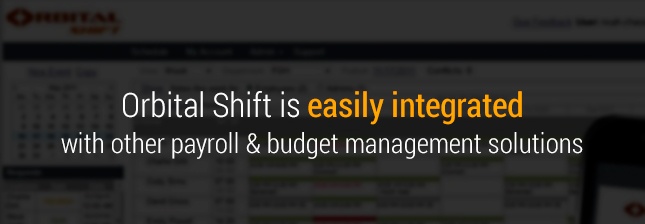
So, if you're looking to make the change to a smart, small business-friendly time clock and employee scheduling management solution, look no further than Orbital Shift! Start with a free trial and discover just how easy Orbital Shift is. We're confident that after even a day of using our smart SaaS time clock solution, you'll swear off traditional time clock hardware for good.
And once you do get on board, you can feel good about our competitive pricing and unrivaled support. Our team is excited to hear from you, so feel free to contact us today with any questions.

